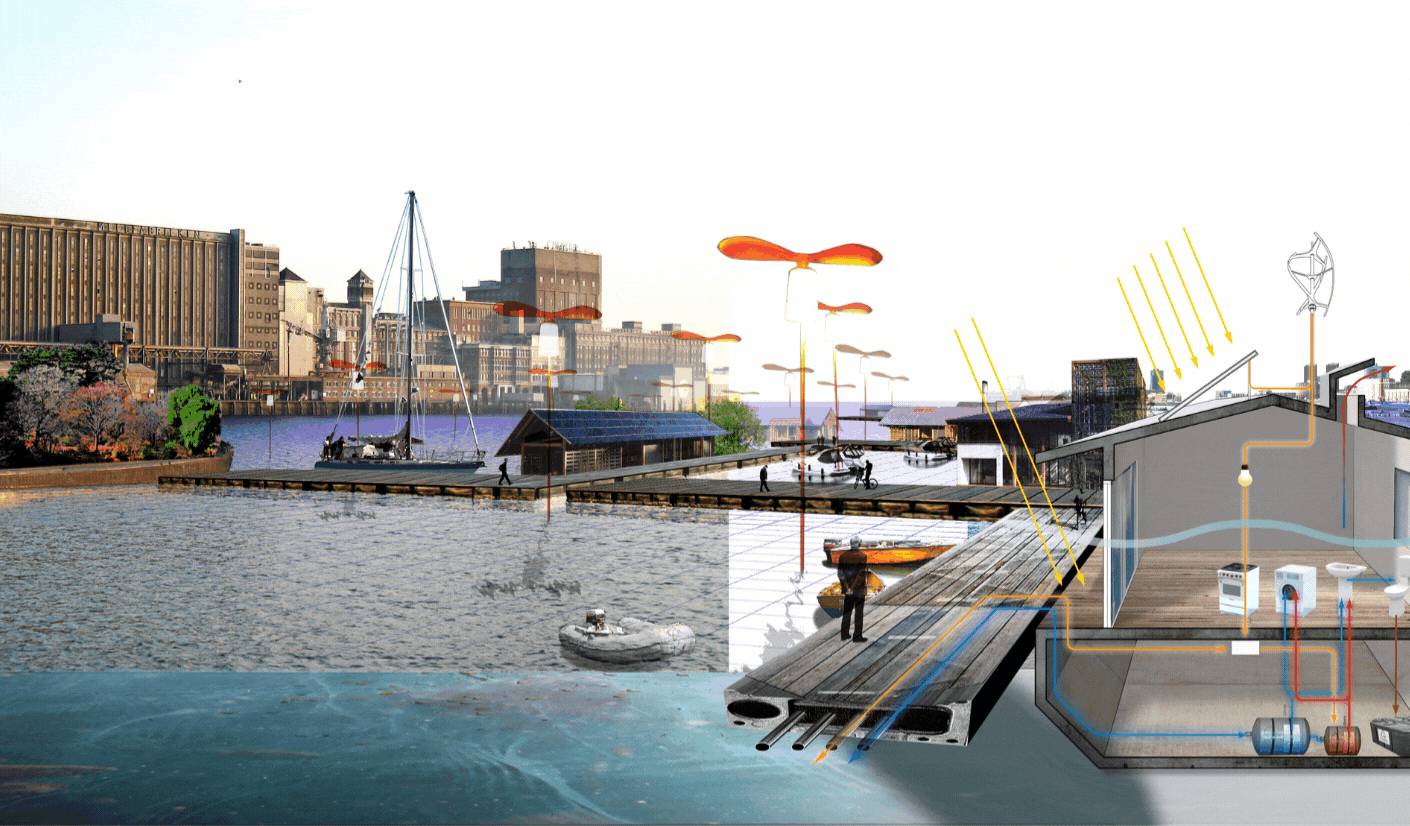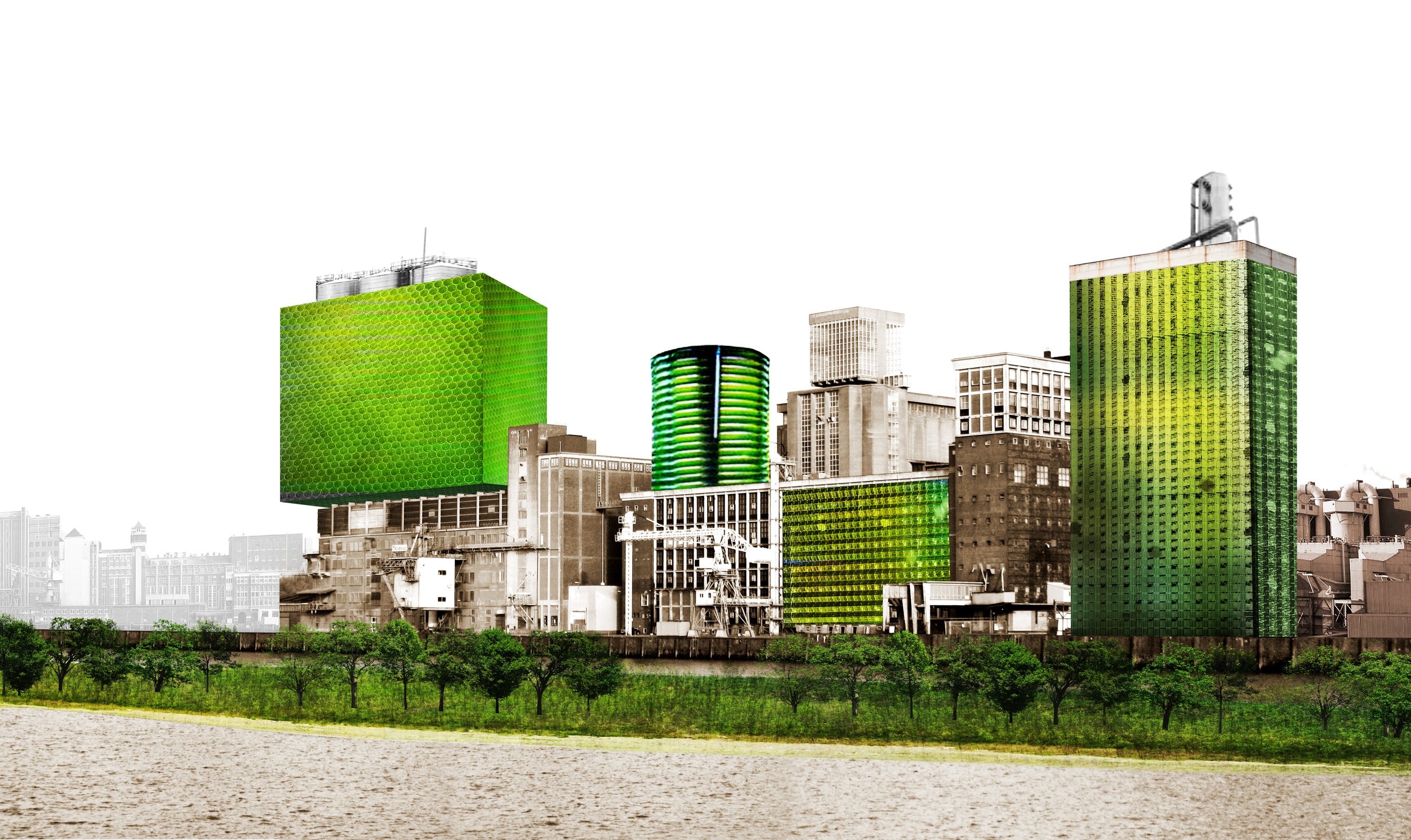
CO2-smart urbanism
Rotterdam, The Netherlands
Location | Stadshavens Rotterdam, The Netherlands
Year | 2008 - 2009
Client | Rotterdam Climate Proof, Projectbureau Stadshavens, City of Rotterdam
Collaboration | APPM management consultants, City of Rotterdam Engineering bureau, Andy van de Dobbelsteen (professor bioclimatic design, TU Delft)
Status | Explorative study for bussiness case
Rotterdam has set its goal on a 50% reduction of CO2 emissions in 2025. This abstract figure asks for concrete measurements to calculate on and above all to understand the impact on daily life. Case study is Stadshavens, an area of 1600 hectares that is gradually transforming from hardcore harbour to a mix-use urban area. Here DE URBANISTEN explored spatial measurements that reduce CO2 emissions and that improve the urban quality at the same time
Rotterdam has set its goal on a 50% reduction of CO2 emissions in 2025. This abstract figure asks for concrete measurements to calculate on and above all to understand the impact on daily life. Case study is Stadshavens, an area of 1600 hectares that is gradually transforming from hardcore harbour to a mix-use urban area. Here we explore spatial measurements that reduce CO2 emissions and that improve the urban quality at the same time.

Reduce demand by improving public transport and cycle networks

We base all actions for CO2-reduction in Stadshavens on three principles, the so called REAP method: reducing energy; reusing surplus energy; using sustainable sources. For each of the three principles, we propose a set of spatial interventions on different urban scales. All our proposals are calculated on their CO2 reduction effect. Reducing energy demand can be done by interconnecting public transport over water better to the existing network of metro and tram as well as by linking to the existing cycle networks of the city. On a more local scale energy is reduced by autarkic floating communities in the former harbour basins.

Reduce demand
Reducing energy demand can be done by interconnecting public transport over water better to the existing network of metro and tram as well as by linking to the existing cycle networks of the city. On a more local scale energy is reduced by autarkic floating communities in the former harbour basins.
The city has an enormous surplus of warmth available. Especially industry can become a source of energy by catching their rest warmth for programme that need less intensive heat levels like houses or offices. But also more public programme can visibly benefit. At the Maashaven we propose a floating swimming pool that is heated by the adjacent industry. Instead of releasing their warmth into the air, they can freely heat public baths all year round.
In Stadshavens space can be found to safely place 50 wind turbines. They produce energy for at least 30.000 households and contribute to a marvelous panorama of cranes and ships that reminds to heroic images of the old port of Rotterdam. On a small scale there is a huge potential for solar roofs in Stadshavens. Because of natural cooling by the water, there is no need for green roofs to reduce an urban heat island effect. All outer dike roof area is potentially exploitable for harvesting clean energy.








